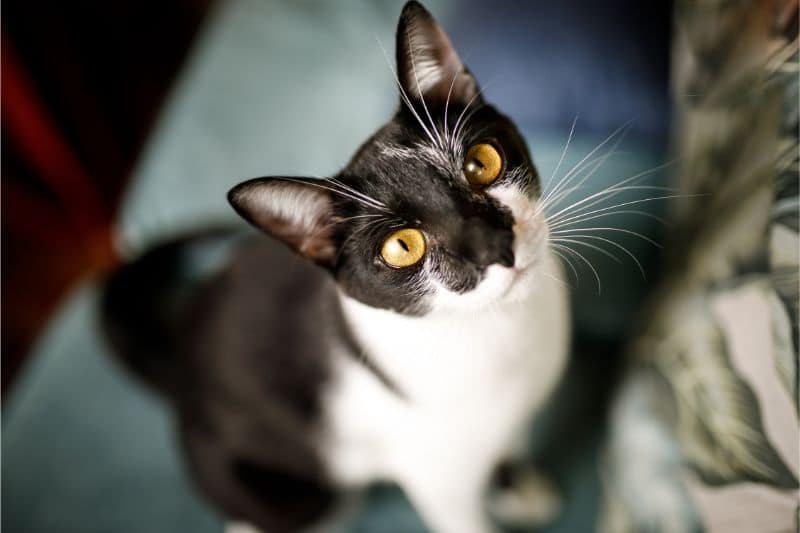The Straight Story on Whisker Fatigue

It’s not always the easiest thing to grasp what your cat is doing – or why. Sure, they can have some odd or questionable proclivities, but if you’re hip to feline behavior and good at reading their body language, you’ll have a better time understanding what drives them.
The concept of whisker fatigue is on the periphery for most cat owners, yet it’s something that can cause intense distress for their furry friends.
Amazing Anatomy
Cat whiskers are absolutely incredible. Aside from sending messages to the brain about a cat’s surroundings, these powerful vibrissae detect air currents, allow cats to hunt accurately, help them jump and climb with precision, and inform them when it’s time to blink or retreat from a space. They also inform others of a cat’s mood.
Added Impact
While cat whiskers add to their wonderful appearance, they are primarily engaged to help felines orient themselves. Proprioceptors, or special sensory organs, on the tips of whiskers pick up vibrations from the environment and send signals to the brain. Each whisker is loaded with nerves and blood vessels, and is as sensitive to touch as our own fingertips.
Strategically Placed
The exact locations of cat whiskers are not accidental. Placed on either side of the nose, above the eyes, chin, on the forelegs, and near the ears, whiskers have corresponding areas in the brain. When overstimulated by sensory triggers, cats can suffer from whisker fatigue.
Dive Deeper Into Whisker Fatigue
Astoundingly, almost 40% of the brain’s sensory area lines up with parts of the body that have whiskers. That not only underscores the importance of feline whiskers, but inspires great care and respect for their capabilities.
Whisker fatigue can occur when the whiskers are touched too much. Owners should not rub them too hard or against the grain. They should never be pulled out or cut as this can cause stress, confusion and disorientation.
What You Might See
Whisker fatigue occurs from simple overstimulation or overuse. Depending on duration and individual sensitivity, you may notice a range between outright pain or general irritation to touch. Some cats become aggressive.
A Closer Look
The condition of whisker fatigue can result from a cat’s most basic functions: eating and drinking. If your cat’s bowls are too deep, they may struggle over time to pin their whiskers back so they don’t touch the sides.They might use their paws to dig food out the bowl to the floor. Some end up tipping over their water bowl.
Instead, provide small, wide, shallow dishes that don’t require them to tuck their whiskers back. A circulating water fountain can also solve the problem.
We Love Cats
We love cats and we know you do, too. If you have concerns about whisker fatigue, we recommend watching your cat eat and drink. If they show few signs of sensitivity when you touch their face, they are likely satisfied with their bowls.
Please let us know if you have questions about your cat’s health and behavior. We’re always here for you at Rocklin Ranch Veterinary Hospital.

